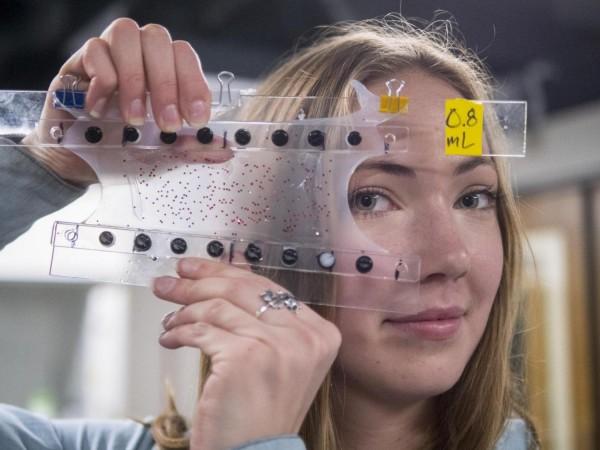
Artificial Intelligence will not be the only game-changing trait in robots of the future. These next-generation droids could also be made from soft materials that can mimic human muscles, according to researchers in Colorado.
Researchers, working in the project, said that these artificial muscles can imitate the expansion and contraction of biological muscles, self-sense their movements and self-heal from electrical damage. These muscles will not only be significantly stronger and faster than their natural counterparts, but will also be able to handle delicate objects like a raspberry and a raw egg without damaging them.
Dubbed hydraulically amplified self-healing electrostatic (HASEL) actuators, these new robots give up the bulky, rigid pistons and motors of conventional robots, and use soft and electrically activated structures that exceed or match the strength, speed and efficiency of biological muscle.
Scientists believe that this versatility may enable artificial muscles for human-like future robots and a next generation of prosthetic limbs. The researchers developed three designs of HASEL actuators that are detailed in separate papers appearing in the journals Science and Science Robotics.
"We draw our inspiration from the astonishing capabilities of biological muscle," Christoph Keplinger, senior author and assistant professor in the Department of Mechanical Engineering at the University of Colorado at Boulder, said in a statement. "Just like biological muscle, HASEL actuators can reproduce the adaptability of an octopus arm, the speed of a hummingbird and the strength of an elephant."

One of the three iterations created by the researchers consists of a donut-shaped shell filled with an electrically insulating liquid (such as canola oil), and is hooked up to a pair of opposing electrodes. When voltage is applied, the electrically insulating liquid, which can immediately regain its insulating properties and heal any damage caused by high voltage, gets displaced and changes the shape of the surrounding membrane.
In another method, a layer of the special liquid is sandwiched between several layers of highly stretchable ionic conductors. This HASEL design expands and contracts linearly upon electrical activation to either lift a suspended gallon of water or flex a mechanical arm holding a baseball.
"The ability to create electrically powered soft actuators that lift a gallon of water at several times per second is something we haven't seen before. These demonstrations show the exciting potential for HASEL," Eric Acome, a doctoral student in Keplinger group and the lead author of the paper, said in the statement.
The third method, which is apparently most applicable for robotics, uses three small rectangular pouches filled with the liquid and contracts on application of a voltage much like biological muscle.
"We can make these devices for around 10 cents, even now," Nicholas Kellaris, also a doctoral student in the Keplinger group and the co-author of the study, said. "The materials are low-cost, scalable and compatible with current industrial manufacturing techniques."














